Inf luence of simulating deep-sea environmental factors on cathodic performance of seawater battery*
LU Yonghong , YANG Lulu , ZHANG Yue , ZHAO Qing , SANG Lin , DING Fei , XU Haibo ,
1 College of Chemistry and Chemical Engineering, Ocean University of China, Qingdao 266100, China
2 National Key Laboratory of Science and Technology on Power Sources, Tianjin Institute of Power Sources, Tianjin 300084,China
Abstract A metal-dissolved oxygen seawater battery (SWB) uses metal and dissolved oxygen as the reactants, and it is ideal for use as a long-time low-power distributed power supply in deep sea, due to its advantages of open structure in service without electrolyte. However, several simulating deep-sea environmental factors, such as f low rate, dissolved oxygen concentration, and temperature of seawater may aff ect the oxygen reduction reaction (ORR) rate and the stability of electrochemically modif ied polyacrylonitrile-based carbon f iber brush (MPAN-CFB) cathode, which was studied by steady-state polarization and galvanostatic discharge methods. In addition, the scales formed on MPAN-CFB surface were characterized by SEM and XRD. Results show that the ORR rate increased quickly with the increase of the seawater f low rate up to 3 cm/s, and then gradually stabilized. Moreover, the ORR rate was largely aff ected by dissolved oxygen concentration, and the concentration of >3 mg/L was favorable. Compared with surface layer temperature of 15°C, the low temperature of deep sea (4°C) has a negligible eff ect on ORR rate. When the working current is too high, it will lead to the formation of CaCO 3 scales (aragonite) of at the cathodic surface, resulting in the decrease of ORR rate, and consequently the damage to the long-time stability of MPAN-CFB.
Keyword: seawater battery (SWB); deep sea; modif ied polyacrylonitrile-based carbon f iber brush (MPANCFB); oxygen reduction reaction (ORR); scale formation
1 INTRODUCTION
Cathodic reaction of a metal-dissolved oxygen seawater battery (a simple abbreviation as SWB)depends mainly on the reduction of dissolved oxygen in seawater to obtain the electron (oxygen reduction reaction (ORR), Eq.1), while the anodic reaction of SWB depends on metals with high negative potential,such as magnesium (Mg) alloy (Eq.2), to dissolute and donate the electron, and the seawater is used as electrolyte, whose ocean current can transport oxygen and eliminate by-products—Mg(OH)2and CaCO3(Eqs.3 and 4) (Song and Wang, 2004; Sun et al.,2008). In fact, as a no-pollution and renewable marine distributed power source, SWB is usually designed as an open structure to safely put into use without pressure-resistant cabin, and it has been conf irmed that the ultrahigh pressure of 1 100 bar under simulated deep sea condition brings negligible eff ects on the performance of battery and electrodes (Liu et al.,2017). Moreover, SWB has high energy density of 700-1 200 Wh/kg which is determined by the anodic performance, thus it is suitable as the long-term power supply in years for low-power deep-sea observation equipment (such as submarine geology exploration,underwater acoustic communication, navigation and early-warning information platform, etc.), so as to avoid using expensive and unsafe submarine cable or hundreds of kilograms to tons weighted primary lithium battery (Xu et al., 2012; Hahn et al., 2015).
In addition, the power density of SWB is determined by the cathodic performance, and the improvement of cathodic ORR catalytic activity is always a hot topic in electrochemical f ields (Guo et al., 2016; Liu et al.,2016). At present, the commonly-used cathodic materials are carbon f iber, graphite, stainless steel,copper and air electrodes, and so on, in which the carbon f iber has the advantages of corrosion resistance,large surface area, excellent f lexibility, good electrical conductivity and stability (Hasvold, 1990; Hasvold et al., 1997; Wang et al., 1997; Wilcock and Kauff man,1997; Shinohara et al., 2009). SWB has been commercialized at present. In 2009, Japan used SWB1200 (a product of assembling carbon f iber with magnesium alloy from Kongsberg Simrad, Norway)for a sea f loor seismic observatory at 5 577-m water depth for >5 years, but the volume specif ic power is only 2.7 mW/L due to a poor cathodic activity(Shinohara et al., 2009; Jiao et al., 2018). On that basis, the commercial polyacrylonitrile-based carbon f iber (PAN-CF) was made into the brush electrode,and then it was electrochemically modif ied to convert its inherent pyridinic-N into 2-pyridone (or 2-hydroxyl pyridine) functional group with remarkable ORR catalytic activity (Xu et al., 2015). The modif ied PANCF brush electrode (denoted as MPAN-CFB) was used in a real sea test by combining with Mg alloy to fabricate into Mg-dissolved oxygen SWB, whose high electrocatalytic activity and stability have also been successfully conf irmed (Xu et al., 2012, 2015).
However in real sea application, SWB performance was observed not only to depend on the activity and stability of cathodic material itself, but also to be closely related to the marine environment. Concerned with deep sea, some factors, e.g. f low rate (2-15 cm/s),dissolved oxygen concentration (0-6 mg/L) and temperature (0-4°C) etc., directly or indirectly aff ect the cathodic reaction rate (Chen, 2009; Xu et al.,2012). In particular, the f low rate and dissolved oxygen concentration determine the supply speed and amount of oxygen to cathodic surface, and the temperature also aff ects the reaction rate directly(Zha, 2002).
In addition, these factors inf luence the scale formation on SWB cathodic surface. This process is similar to that arising from hydrogen evolution reaction (HER, Eq.5) in corrosion-resistant cathodic protection (CP) of steel; however the former disturbs the oxygen transfer and gives damage to SWB performance, whereas the latter does favor to metal anti-corrosion against aggressive medium (Neville and Morizot, 2002; Morse et al., 2007). Particularly,both ORR and HER produce OH-and cause the surface alkalization on cathodic surface, which probably result in the formation of scale layer,including aragonite and calcite precipitation of CaCO3, and brucite of Mg(OH)2, etc. (Mucci, 1983).Meanwhile, the ocean convection aff ects the degree of alkalization, which possibly takes away some or even all of the precipitates to weaken the scaling tendency, if only the seawater f low rate is large enough. Moreover, the low temperature in deep sea increases the solubility product of CaCO3, decreases the precipitation rate of the scales, or even changes their polymorph, e.g. aragonite or calcite (Mucci,1983; Morse et al., 2007).
At present, many references focus on how marine environmental parameters and working current/voltage aff ect the scale formation on metal surface under CP, whereas few relates them with the ORR rate and scaling tendency of carbon-based materials.Therefore, by point-by-point steady-state polarization and galvanostatic test (i.e. constant-current discharge)method, the inf luences of f low rate, temperature and dissolved oxygen concentration of seawater on MPAN-CFB performance of SWB are investigated in simulating deep-sea environment, and the scales are characterized by SEM and XRD to determine the morphology and composition, in order to promote the SWB deep-sea application in resource exploration and safety guarantee early.
Cathodic reaction (ORR):

Anodic reaction:
Side reactions:

Cathodic reaction (HER):

2 MATERIAL AND METHOD
2.1 Brush electrode preparation and activation
An amount of 6.32 g PAN-CF wire beam (Toray T700SC/24K, ~7 μm f iber diameter, 1.65 g/m linear density) is made into brush electrode (18 cm length,7 cm body diameter) with titanium wire (TA2, 1.5 mm diameter). PAN-CFB is modif ied in 2 mol/L H2SO4solution by recurrent galvanic pulse method, i.e.cycling 6 times from 5.0 A anodic current for 300 s to the same cathodic current for 300 s, and then stabilized at 1.4 V for 1 h to prepare MPAN-CFB.

Fig.1 Diagram of simulating experimental device
2.2 Experimental device and electrochemical test
The simulating experimental device is shown in Fig.1. The temperature of natural seawater (pH 8.2,Qingdao Jiaozhou bay) was controlled by a constantand low-temperature cooling tank (YT-DW-2B,Wuhan Yite Instrument Co. Ltd., China). A DC submerged water pump placed in an enclosed 5-L liquid storage tank was used to circulate the seawater between storage tank and reaction tank and regulate the f low rate. N2or O2from gas bottle was input into liquid storage tank to adjust the dissolved oxygen concentration in seawater, which was monitored in real time by a dissolved oxygen meter (JPSJ-605,Shanghai Leici Instrument Factory, China). The value of pH was monitored by a Model pH meter (E-201-C,Shanghai Leici Instrument Factory, China).
Conventional three-electrode systems in enclosed reaction tank was used, MPAN-CFB as working electrode, a self-made Ti/IrO2mesh plate as auxiliary electrode and a saturated calomel electrode (SCE) as reference electrode. A potentiostat/galvanostat (ZF-9,Shanghai Zhengfang Electronics Co. Ltd., China)was used and all potentials are referred to the SCE.
Steady-state polarization curves were tested in the range of -700-50 mV, changing the potential every 50-100 mV and recording the current after 3 min stabilization under these conditions: room temperature of 15°C or low temperature of 4°C, 9 mg/L saturated oxygen concentration or 1-6 mg/L dissolved oxygen concentration, and 1-6 cm/s seawater f low rate. The galvanostatic discharge curves of MPAN-CFB at diff erent current (-100, -200, and -300 mA) were tested in 15°C, naturally aerated seawater with 2 cm/s f low rate. After working for some time, MPAN-CFB was taken out and immerged into 0.1 mol/L HCl solution to remove the by-products. After physical characterization, the discharge tests proceeded again.
2.3 Physical characterization
The morphology of MPAN-CFB before and after-300 mA galvanostatic discharge was observed by scanning electron microscopy (SEM; TM-1000,Hitachi) with an accelerating voltage of 10 kV, and its X-ray diff raction (XRD) pattern after discharge test was measured by using a Cu Kα radiation system(40 kV, 100 mA, 6/ min, D8 Advance, Bruker).
3 RESULT AND DISCUSSION
3.1 Eff ect of f low rate on MPAN-CFB performance
Photos of cathode before and after modif ication are shown in Fig.2. It can be seen that before modif ication(the left), the PAN-CFB cathode shows typical grayblack metallic luster of carbon f iber; while after modif ication (the right), the MPAN-CFB cathode looks blacker or even colorful under sunshine due to light scattering.
Polarization curves of PAN-CFB (Fig.3a) and MPAN-CFB (Fig.3b) were compared in seawater(15°C, 9 mg/L saturated oxygen concentration) with diff erent f low rate. It can be seen that the ORR activity of MPAN-CFB was greatly improved. A positive shift of the initial oxygen reduction potential (Eonset) from-250 mV to -50 mV occurred. At the same time, the ORR current density of MPAN-CFB was increased by 6-27 times compared with that of PAN-CFB at diff erent polarization potential. For example, under a 3 cm/s seawater f low rate, the ORR current density of MPAN-CFB reached -178.9 mA/g, whereas that of PAN-CFB was only -6.5 mA/g at -450 mV.
Moreover, the seawater f low rate signif icantly aff ected the ORR rate. The current density of both PAN-CFB and MPAN-CFB was very low at 1 cm/s,owing to a much higher consuming rate of dissolved oxygen than its supply rate on electrode surface. As we know, at a low f low rate, the mass transfer of dissolved oxygen mainly relies on natural diff usion,so that the ORR rate was controlled by the diff usion process and thereby showed low reaction activity. At 2 cm/s, the current density was signif icantly increased;but from 3 cm/s on, its rising tendency slowed down,corresponding to the previous conclusions that the commercial SWB needs to be used at >2 cm/s seawater f low rate, in order to guarantee a good ORR catalytic eff ect and satisfy the performance requirement of SWB for a long-range, autonomous underwater vehicle (Hasvold et al., 2004). Therefore,a value of 3 cm/s indicates a critical seawater f low rate for SWB.
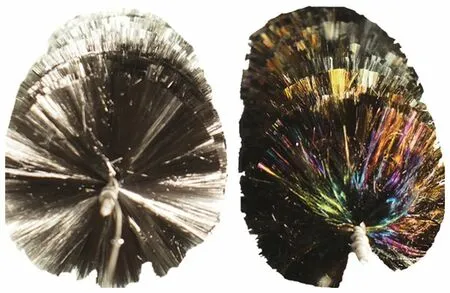
Fig.2 Morphology of SWB cathode before (left) and after(right) modif ication
3.2 Eff ect of dissolved oxygen concentration on MPAN-CFB performance
Steady-state polarization curves (E-LogI) of MPAN-CFB in seawater (15°C, a slow f low rate of 2 cm/s) with 1-6 mg/L oxygen concentration are displayed in Fig.4. We divide the curves into two parts: zone I of -50- -250 mV (low current density)where the ORR was controlled by typical electrochemical process and diff usion process simultaneously; and zone II of -250- -700 mV (high current density) where the ORR was solely controlled by oxygen diff usion process. No matter in zone I or II,the reaction rate on MPAN-CFB was greatly aff ected by the dissolved oxygen concentration, especially at<3 mg/L. Considering an open structure of SWB,several SWBs must be used in parallel other than in series to prevent the power supply loss from solution resistance, which resorted to the DC-DC voltage booster to enhance the output voltage to a higher value (e.g. to 24 V or 36 V). Therefore, the cathodic ORR process of SWB was usually kept in zone I, in order to provide a >1.2-V output voltage, due to the restriction of voltage-boosting effi ciency (the higher output voltage gives, the higher voltage-boosting effi ciency achieves). From the polarization curve of zone I, the diff erence in current density seemed small once the dissolved oxygen concentration reached>3 mg/L. Therefore, a favorable oxygen concentration of >3 mg/L is required for high SWB performance in deep sea.
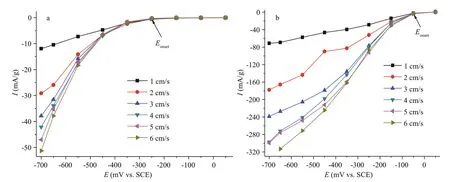
Fig.3 Eff ect of seawater f low rate on SWB cathodic performance

Fig.4 Eff ect of seawater oxygen concentration on SWB cathodic performance
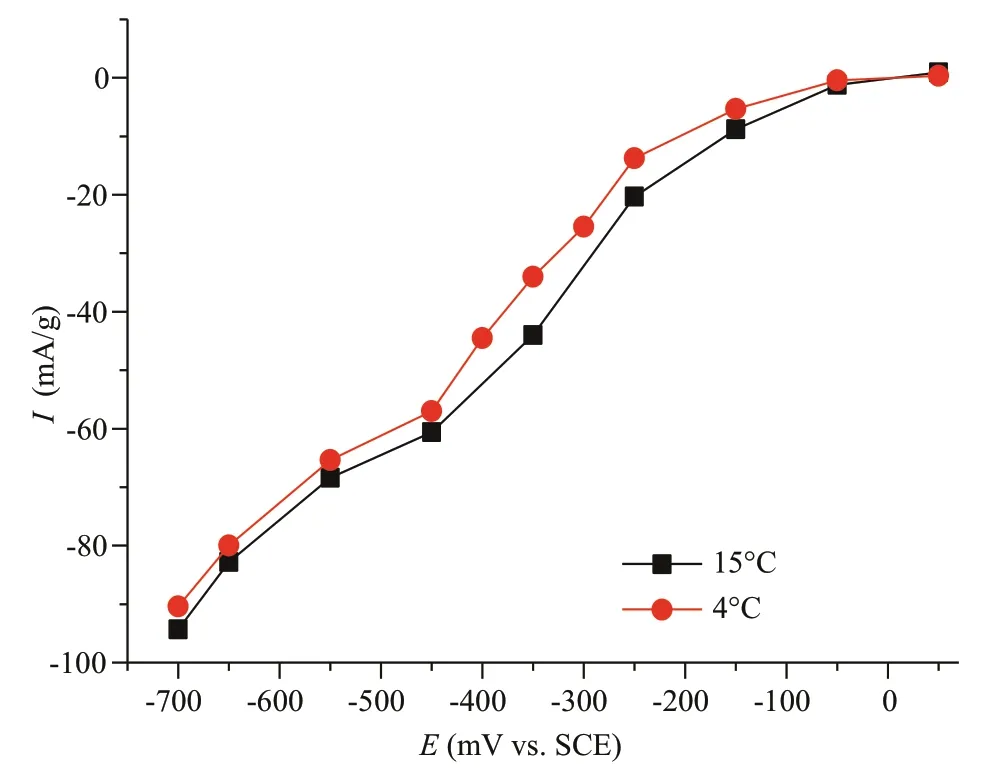
Fig.5 Eff ect of seawater temperature on SWB cathodic performance
3.3 Eff ect of temperature on MPAN-CFB performance
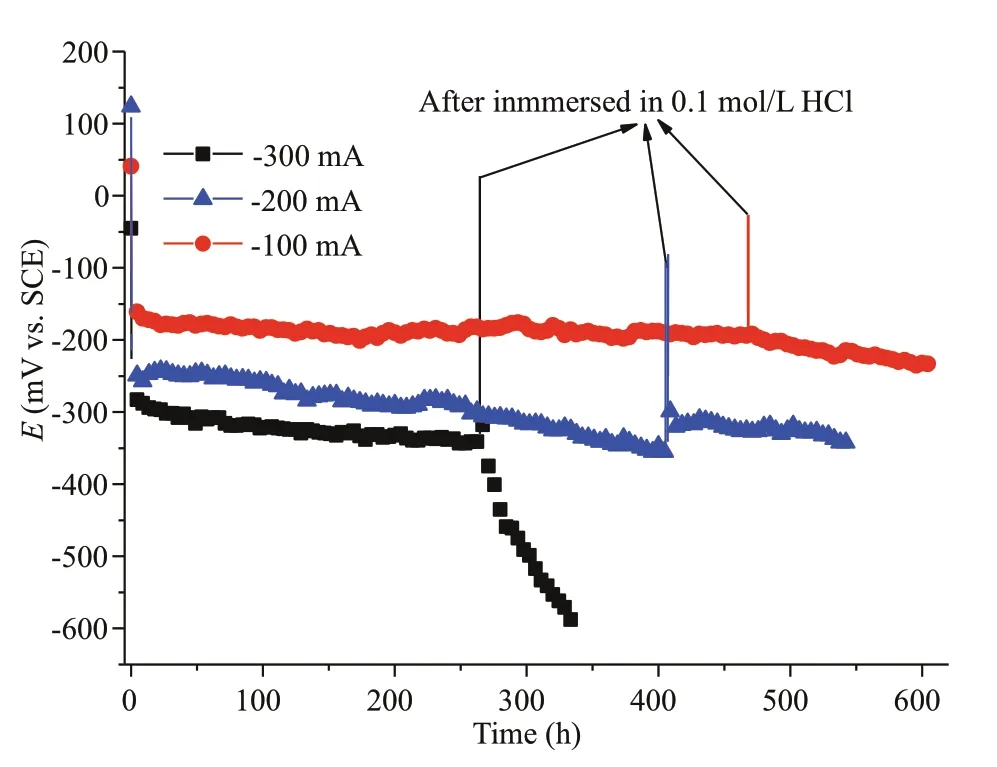
Fig.6 Long-term stability test of SWB cathodic performance
Steady-state polarization curves of MPAN-CFB in seawater (4 cm/s f low rate, 3 mg/L oxygen concentration)at simulated deep-sea low temperature of 4°C and marine surface temperature of 15°C are compared in Fig.5. It can be observed that both curves are approximately similar in shape, indicative of the same reaction mechanism and the controlled process. Two curves start at nearly the sameEonset; the cathodic current density increases with a negative shift of polarization potential from -50 mV to -700 mV, and the diff erence in current density reaches 10 mA/g at-350 mV at f irst but then reduces to 3 mA/g from-450 mV on, i.e. a more decrease of ORR rate at low cathodic potential. The inf luence of low temperature on chemical reaction rate lies in a decrease of mass transfer and an increase of solution resistance, which can be observed in Fig.5 clearly. It indicates that the temperature had a little eff ect on ORR rate, which is often neglected in marine engineering considering its allowable error.
3.4 Long-term stability test
Galvanostatic discharge tests at -100 mA, -200 mA and -300 mA were performed in naturally aerated seawater (15°C, 2 cm/s f low rate), to investigate the long-term stability of MPAN-CFB (Fig.6). During the whole experiments, the pH value of seawater changed very little. It can be seen that the polarization potential decreased largely with the time at -200 mA and-300 mA, a drop of 120 mV in 400 h and 100 mV in 260 h, respectively, but only 20 mV in 466 h at-100 mA. Considering the initial pH 8.2 of the sample seawater, together with the OH-accumulation from ORR process, they easily led to the surface alkalization combiningly and form the CaCO3scale layer on MPAN-CFB surface (Mg(OH)2usually produces at higher temperature and pH), which may hinder the mass transfer of oxygen, and negatively give rise to a large shift of polarization potential, especially at high working current.
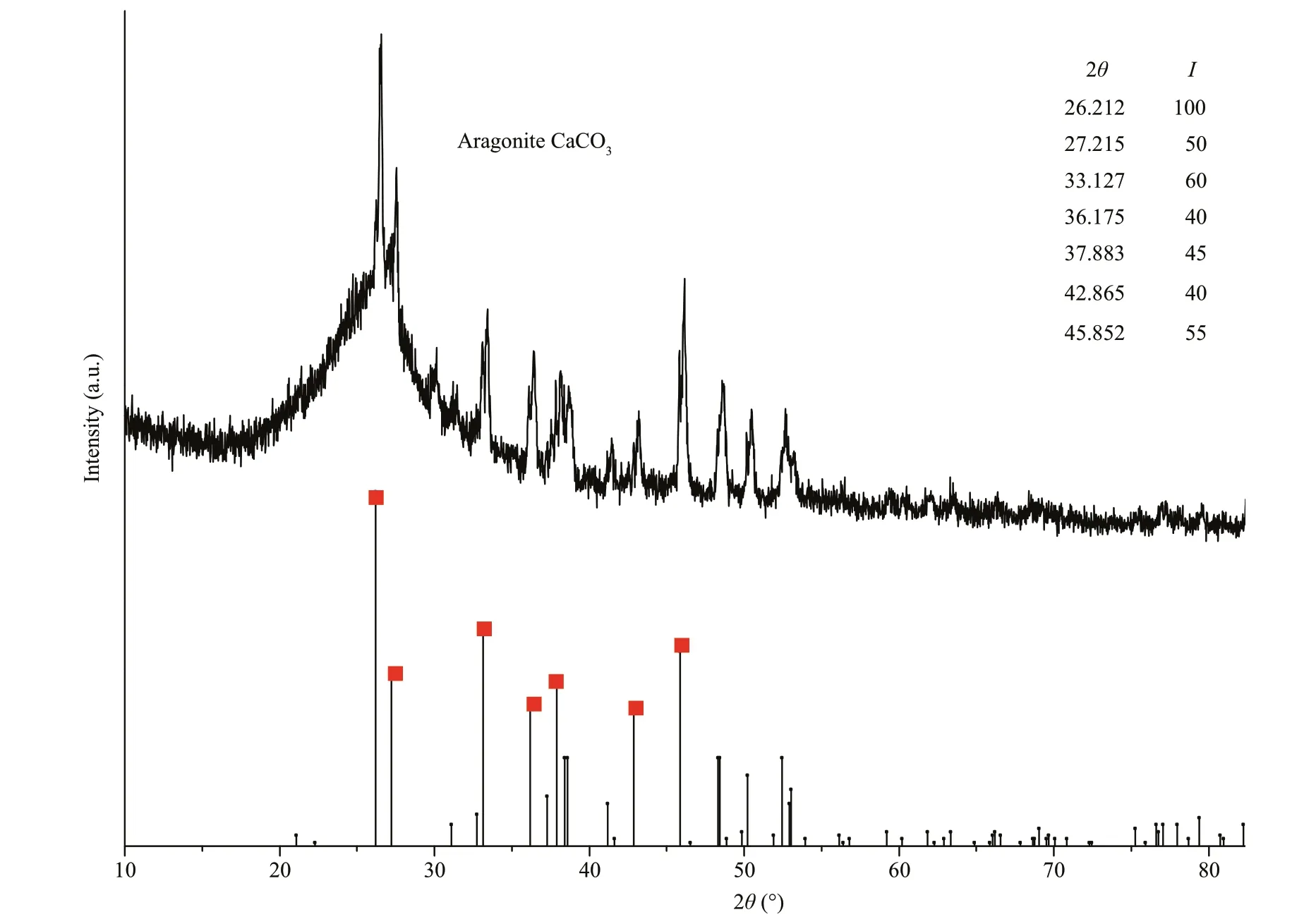
Fig.7 Scale composition on SWB cathode by XRD
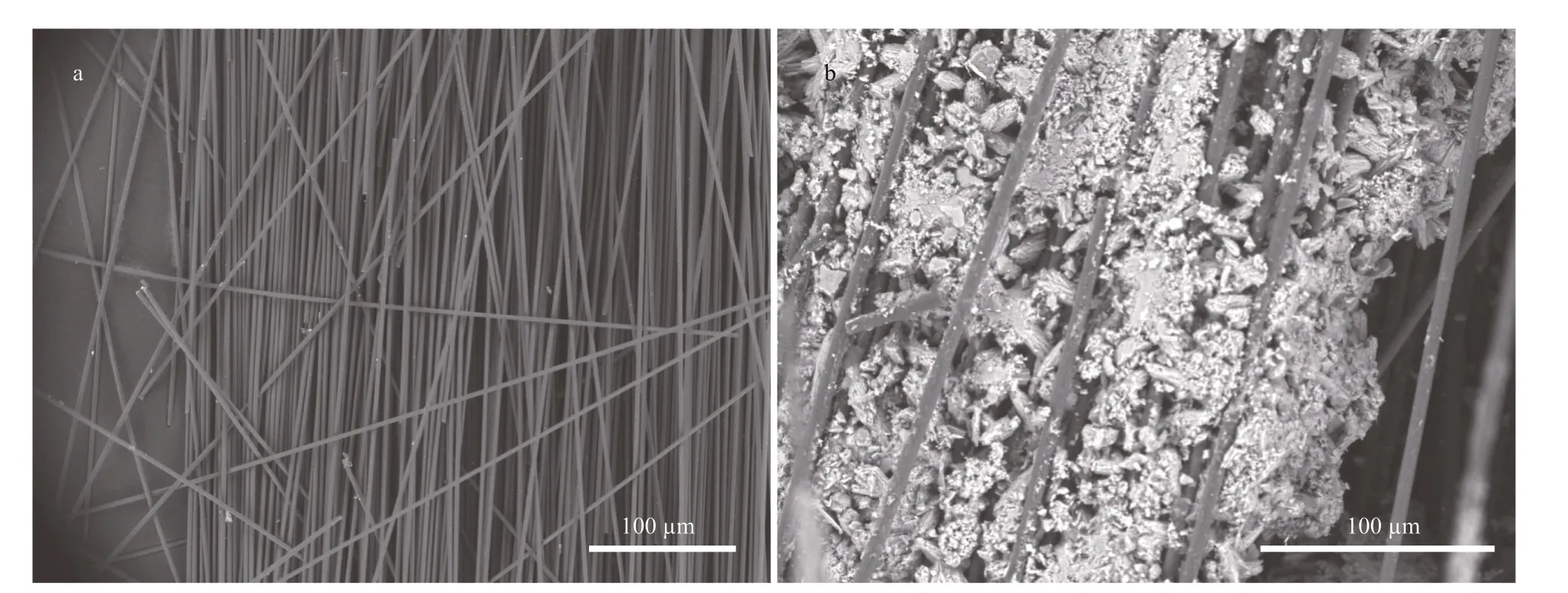
Fig.8 Surface morphology on SWB cathode by SEM
And then, to verify the composition of scales, the working MPAN-CFBs were taken out to immerse into 0.1 mol/L HCl solution, and many bubbles were found, preliminarily indicative of the appearing of CO2from CaCO3. At the same time, they were characterized by XRD (Fig.7), and the CaCO3with aragonite structure was conf irmed. Some f iber wires were taken from MPAN-CFB at -300 mA to be characterized by SEM (Fig.8). Compared with the blank sample before galvanostatic discharge (Fig.8a),it can be seen that many sediments accumulateed to form a compact scale layer on MPAN-CFB surface(Fig.8b).
For calcareous deposit on carbon steel under CP,Mg(OH)2deposit did not appear until pH>9.7(Barchiche et al., 2003). Under natural corrosion of low carbon steel in seawater whose cathodic process usually belongs to the ORR, the compact aragonite was more likely formed than calcite of CaCO3with the inf luence of Mg2+, which largely retarded the oxygen diff usion consequently (Möller, 2007).
Finally, after immersed in HCl for half an hour, the MPAN-CFBs were rinsed to neutral pH and then continue the galvanostatic experiment. The results are shown in the latter half of Fig.6. We can see that the performance of MPAN-CFB at -100 mA and -200 mA was almost recovered, but that at -300 mA did not.Some structure damages to MPAN-CFB might occur after HCl immersion and thus the cathodic performance rapidly deteriorated, probably due to the strong cavitation erosion action by a large amount of CO2gas from CaCO3scales formed under -300 mA discharge via HCl, which needs detailed investigation in future. According to the above results, it should be noted that in the application of SWB, not only the MPAN-CFB activity but its long-term stability due to scaling must be considered. Based on the galvanostatic results, a favorable cathodic working current of MPAN-CFB here should be no more than -100 mA.
4 CONCLUSION
After the electrochemical modif ication, the ORR activity of PAN-CFB was greatly improved. TheEonsetof MPAN-CFB was positively shifted about 200 mV compared with that of PAN-CFB, and the ORR rate was increased by 6-27 times under diff erent polarization potential. In deep sea, the more seawater f low rate was, the larger ORR rate was, and the increasing tendency slowed down at >3 cm/s. The benef icial dissolved oxygen concentration was>3 mg/L and a low temperature had a negligible eff ect on ORR rate. A high cathodic working current will form scales on MPAN-CFB surface, resulting in a decrease in ORR activity and the falling of SWB performance. Therefore, to develop a highperformance SWB, it is necessary to improve the activity of cathodic materials, and meanwhile to investigate the working mechanism of marine environmental factors on electrode performance and the scale formation.
5 DATA AVAILABILITY STATEMENT
The data that support the f indings of this study are available from the corresponding author upon reasonable request.
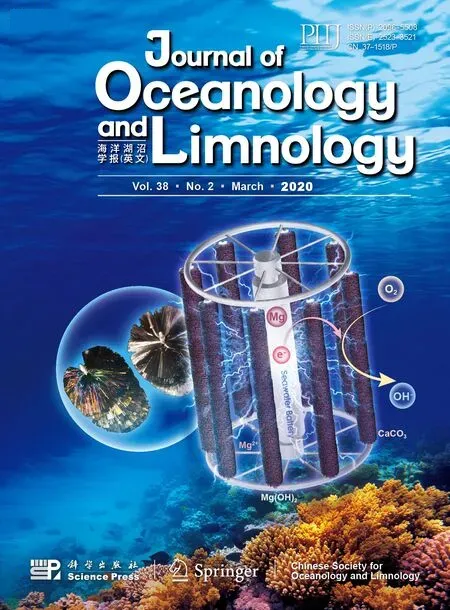 Journal of Oceanology and Limnology2020年2期
Journal of Oceanology and Limnology2020年2期
- Journal of Oceanology and Limnology的其它文章
- Contribution of surface wave-induced vertical mixing to heat content in global upper ocean*
- Upper ocean response to typhoon Kujira (2015) in the South China Sea by multiple means of observation*
- Adsorption characteristics of chitooligosaccharides onto activated charcoal in aqueous solutions*
- Eff ects of hypoxia on survival, behavior, and metabolism of Zhikong scallop Chlamys farreri Jones et Preston 1904*
- Distinct inf luence of trimethylamine N-oxide and high hydrostatic pressure on community structure and culturable deep-sea bacteria*
- Microbial communities present on mooring chain steels with diff erent copper contents and corrosion rates*
